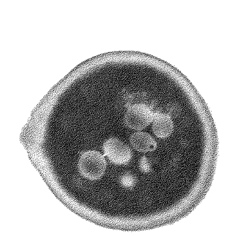Are you a journalist? Please sign up here for our press releases
Subscribe to our monthly newsletter:

No one doubts the power of yeast when it comes to raising dough or brewing beer. But what do the lowly fungi, separated from humans by 1 billion years of evolution, have to do with the science of cancer? It turns out that the power of yeast is no less awesome in molecular biology than it is in the baking or beverage industries: In the past two decades these single-cell organisms have become the model system for much of molecular genetics research. The genes of the small, safe and fast-growing yeast are much easier to study than those of humans, yet the basic cellular mechanisms of division and replication are the same in both species. This is because both yeast and humans belong to a group called “eukaryotes,” organisms whose cells have a characteristic structure such as a distinct nucleus. Moreover, about one-third of yeast's 6,000 genes are related to human genes, and the same genetic mutations are responsible for abnormal growth in yeast and in human cancer cells. While several molecular biologists at the Weizmann Institute use yeast for basic experimentation, one laboratory, headed by Prof. Jeffrey Gerst of the Molecular Genetics Department, works exclusively on this organism. Gerst studies basic questions related to the growth of eukaryotic cells: What signals cause the cell to grow? And what mechanisms control the expansion of the cell surface that enables cells to divide? These questions, relevant to normal and cancerous human cells, can be answered in a simple and elegant fashion using yeast.

The 3-mm-long fruit fly called drosophila, the creature that hovers around spoiled fruit, is one of the most valuable organisms in biological research. Its lifespan is only some two weeks, it is easy to grow and it can be kept by the thousand even in a small laboratory. All of the fruit fly genes were deciphered in 2000 - an accomplishment listed among Science magazine's Breakthroughs of the Year - and more than 70 percent of these genes are identical to those of humans. Scientists have been using fruit flies in genetic research since the early 20th century; today they find drosophila particularly useful for studying the function of genes in a whole organism. The fruit fly is also an ideal model for identifying the role of genetic mutations, including those involved in cancer. Two laboratories in the Molecular Genetics Department use drosophila as their model organism. Prof. Ben-Zion Shilo studies the cascades of signals involved in drosophila development, particularly the signaling cascade that in the course of evolution has been preserved in a wide variety of organisms, from fruit flies to humans. Prof. Talila Volk focuses on the generation of muscles, tendons and nerves in the drosophila embryo, to understand how tissues are formed during embryonic development.

Scientists say that the mouse is the workhorse of modern biology. Mice have been used in cancer research for more than 100 years, and many cancer studies are crucially dependent on the use of these rodents as research models. Mice have all the important genes known to be involved in human cancer because they possess a surprising genetic similarity to humans - 99 percent of mouse genes have a direct human counterpart. What's more, scientists are highly adept at manipulating mouse genes to create so-called transgenic mice - experimental animals that either contain extra genes or, on the contrary, lack certain genes that have been selectively removed (knocked out) to produce a specific trait. By adding or removing individual genes, scientists can clarify the role of these genes in normal development and in cancer. Moreover, such manipulation produces mice with specific genetic defects on which to test therapies that correct the cancer-causing genetic mistakes. Scientists at the Weizmann Institute have created transgenic mice carrying the genetic and cellular defects characteristic of numerous types of cancer, including leukemia, breast cancer and gastric cancer, as well as genetically modified mice with defects related to cancer development and metastasis.

In collaboration with physicians in Israel and abroad, several Institute teams conduct studies that make use of data obtained from people with cancer. Some of these studies are aimed at understanding basic cancer mechanisms, while others are already benefiting patients. For example, Dr. Idit Shachar of the Immunology Department designed the theoretical framework for her research on the role of adhesion molecules in chronic lymphocytic leukemia while analyzing the blood samples of patients in different stages of this disease treated at the Kaplan Medical Center in Rehovot. Prof. Hadassa Degani of the Biological Regulation Department developed her method for early diagnosis of malignant tumors while recording and analyzing magnetic resonance imaging (MRI) data on women with benign and malignant breast tumors at the Hadassah Medical Center in Jerusalem. Prof. Rafael Malach of the Neurobiology Department conducts research that facilitates the removal of both benign and malignant brain tumors, because neurosurgeons operating on such tumors must avoid damaging vital brain areas such as those controlling language, vision or movement. In collaboration with researchers from the Tel Aviv Sourasky Medical Center, Malach’s team is making it possible to obtain a detailed functional map of the patient's brain prior to surgery. The approach makes use of functional MRI, a relatively recent imaging technique in which Malach has conducted pioneering studies.